 "AMC/Renauledge" (n2skylark)
"AMC/Renauledge" (n2skylark)
03/26/2019 at 16:56 ē Filed to: None
 10
10
 18
18
 "AMC/Renauledge" (n2skylark)
"AMC/Renauledge" (n2skylark)
03/26/2019 at 16:56 ē Filed to: None |  10 10
|  18 18 |
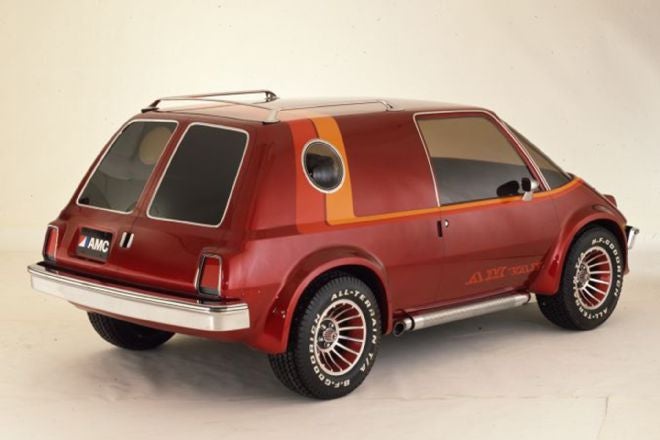
It was shown to the public as part of AMCís ďConcept 80" campaign in 1977. AMC had an all-new subcompact vehicle platform in the advanced design stages at the time, but later concluded that the company didnít have the money to tool up a completely new design. †
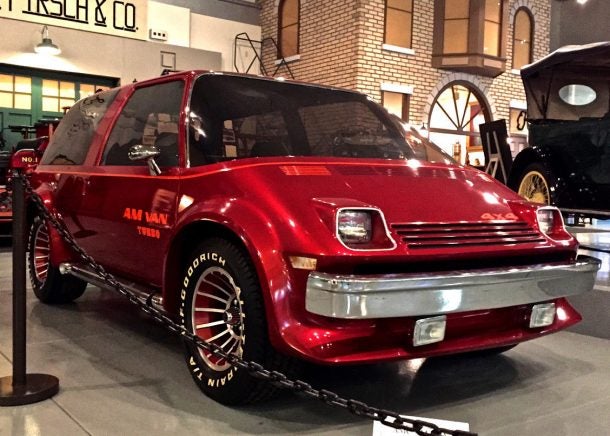
Its small size and expected low price would have likely made it an unprofitable venture, anyway.
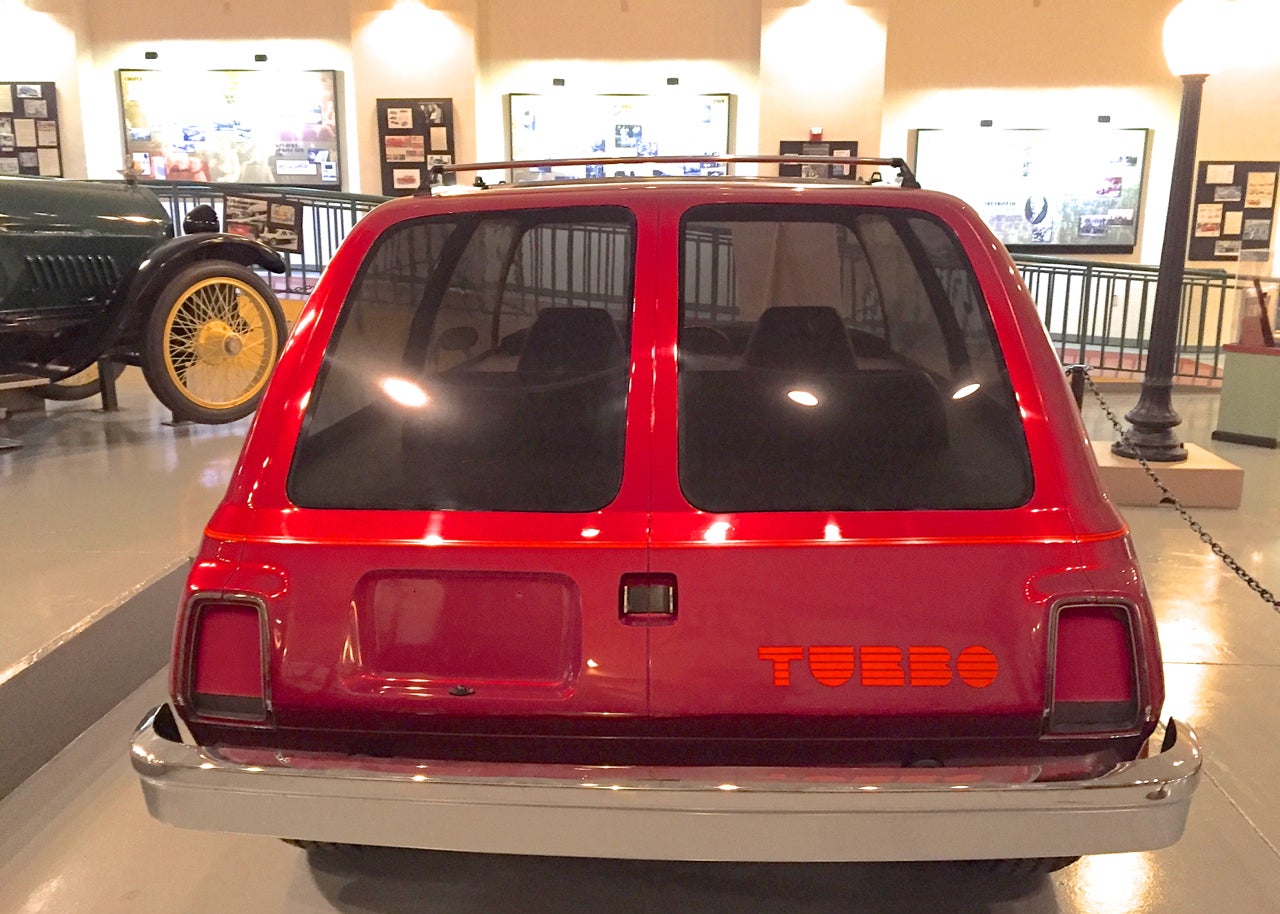
But the AM-Van, AMCís 4WD turbocharged subcompact minivan, debuted to massive public interest when it was shown in 1977. I think it looks fabulous.
 HammerheadFistpunch
> AMC/Renauledge
HammerheadFistpunch
> AMC/Renauledge
03/26/2019 at 17:04 |
|
I miss the days before detailed market research.† Just throw it out there and see if it sticks.††
 AMC/Renauledge
> AMC/Renauledge
AMC/Renauledge
> AMC/Renauledge
03/26/2019 at 17:09 |
|
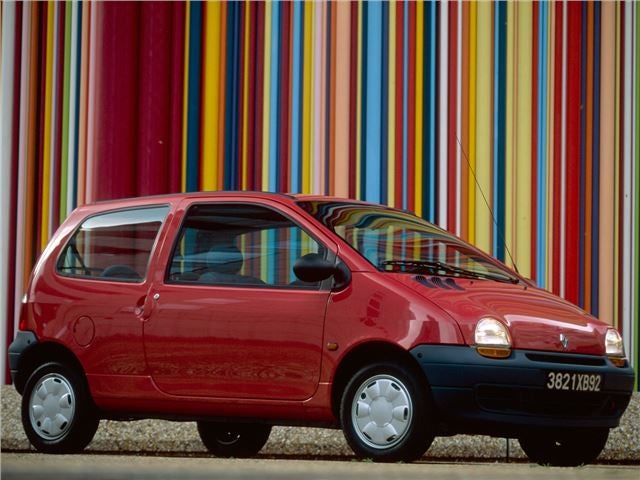
I always wondered if Renault - which owned a big chunk of AMC from 1979-87 - sort of cribbed its design for the original Twingo in 1993. The designs, down to the hooded headlights and recessed doorhandles, arenít that far off.
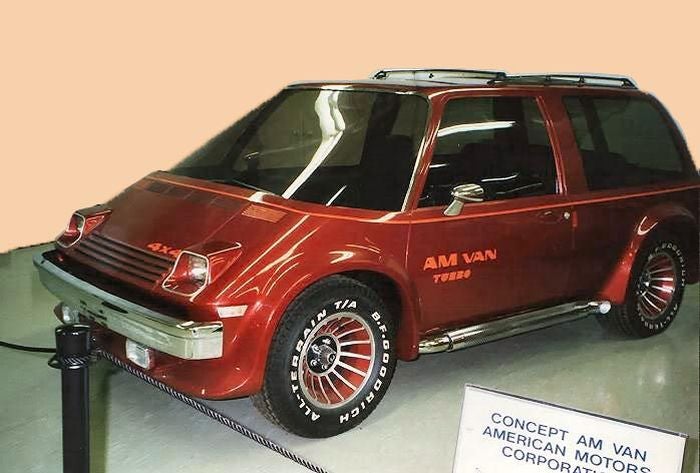
 davesaddiction @ opposite-lock.com
> AMC/Renauledge
davesaddiction @ opposite-lock.com
> AMC/Renauledge
03/26/2019 at 17:11 |
|
These are cool, but youíre kind of doing your own personal theme day, here. =)
 benn454
> AMC/Renauledge
benn454
> AMC/Renauledge
03/26/2019 at 17:12 |
|
Looks like they
stuck the rear glass of the Pacer onto the front. And itís not a proper 70s shaggin wagon without the opera windows
and mags.
I dig it.
 CarsofFortLangley - Oppo Forever
> AMC/Renauledge
CarsofFortLangley - Oppo Forever
> AMC/Renauledge
03/26/2019 at 17:13 |
|
Van day was yesterday man
 AMC/Renauledge
> CarsofFortLangley - Oppo Forever
AMC/Renauledge
> CarsofFortLangley - Oppo Forever
03/26/2019 at 17:19 |
|
Check out all of the van postings from today before mine. Many of us missed the memo to cut it off at yesterday, apparently.
 AMC/Renauledge
> benn454
AMC/Renauledge
> benn454
03/26/2019 at 17:21 |
|

The rear glass on the Pacer was in 3 sections. The front glass was similar, but the AM-Vanís is much more extreme .
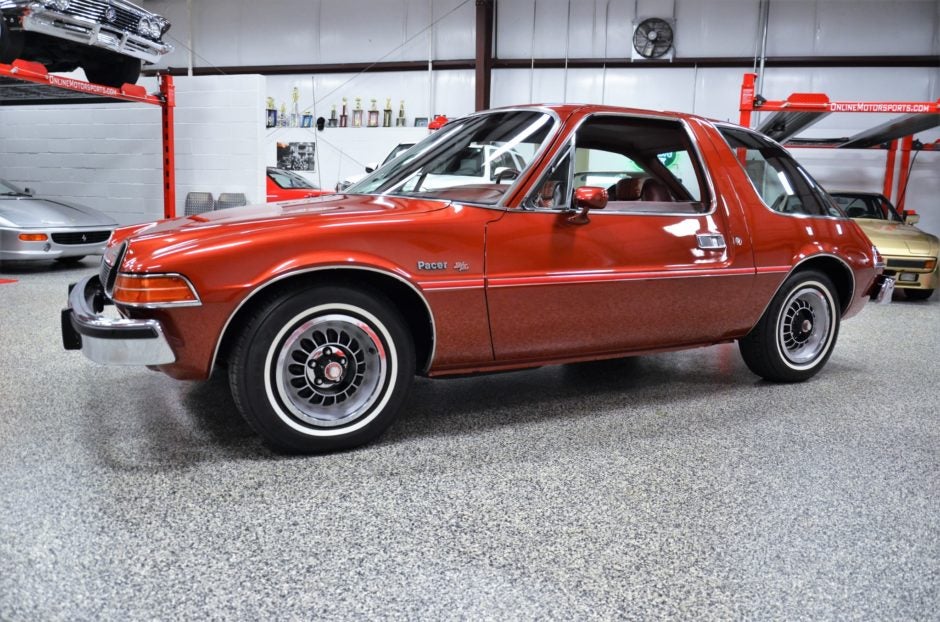
 AMC/Renauledge
> davesaddiction @ opposite-lock.com
AMC/Renauledge
> davesaddiction @ opposite-lock.com
03/26/2019 at 17:23 |
|
Well, given the 5 other van-related posts ahead of me today, I couldnít really tell the difference.
 ranwhenparked
> HammerheadFistpunch
ranwhenparked
> HammerheadFistpunch
03/26/2019 at 18:22 |
|
The Japanese were still doing that for their home market into the 1990s. Though, in that case, it was more a question of having obscene amounts of money and needing to invent new things to spend it on.†
 ranwhenparked
> AMC/Renauledge
ranwhenparked
> AMC/Renauledge
03/26/2019 at 18:24 |
|
Ive always wondered if AMC hadn't spent so much money on the Pacer, Matador Coupe, and rotary program if they could have gotten a modern FWD platform onto the market by the late '70s. It might still have not been enough to save them, but it would certainly have prolonged their life and gave them a shot at being a stronger partner in a merger.†
 benn454
> AMC/Renauledge
benn454
> AMC/Renauledge
03/26/2019 at 18:42 |
|
†Damn optical illusions. It always seemed like it wrapped around from certain angles.†
 AMC/Renauledge
> ranwhenparked
AMC/Renauledge
> ranwhenparked
03/26/2019 at 19:08 |
|
The Pacer was initially supposed to be FWD, which is one of the reasons the hood was so short. The rotary was supposed to be mounted transversely in the engine bay.
However, GM was developing the rotary, not AMC. What caused the Pacer program to balloon so massively in cost was the last-minute full redesign of the entire mechanical layout and body structure.
GM had planned for the rotary to launch in September 1973 so it could go into the Vega for its 1974 facelift. However, the rotary programís unreliability, poor emissions, and poor fuel economy meant that GM kept delaying its introduction. AMC was planning for the Pacer to launch in September 1974 as a 1975 model with this same engine mounted transversely with a transaxle. That year between its debut in the Vega as longitudinal RWD engine and in the Pacer as a transverse FWD engine would be spent refining the transaxle and testing the unique combination to ensure quality at launch.
However, GM announced in November 1973 that the rotaryís launch needed to be delayed so that its issues could be worked out. The Pacer was supposed to launch just 10 months later, and GMís announcement meant that it had no engine and no time to test it with its transaxle. 10 months out, AMC needed to have working prototypes for testing and most of the tooling ordered. They did not have time to wait to see if GM could fix it. It was already too late.
GMís Iron Duke wouldnít come available until 1976 in the Pontiac Sunbird. AMC had just sold the rights to the extremely rough Buick 225 V6 (that Buick fixed and turned into the 231 V6 for 1975) that Jeep had been using since 1967.
Since there wasnít enough time to develop an all-new 4cyl engine, AMC was stuck with their own existing line of inline-6 engines. That meant the engine bay - and especially the firewall - had to be redesigned to accept AMCís long 6cyl engines longitudinally, since the transaxles that AMC had planned to use with the rotary now had no engine to be fitted to, couldnít be made to handle the big sixesí torque, and the engine bay couldnít fit the big sixes width-wise with the transaxle and still give the front wheels any clearance to turn.
The body engineering had already been done. So with 10 months until launch, AMC realized that the entire vehicle structure had to be widened 6" to accommodate the transmission and driveshaft tunnel which now had to run up the middle of the car. The rear structure had to be redone to accommodate a live rear axle and all the backseat/cargo area intrusions that required, along with a huge 21-gallon gas tank the Pacer now needed to get half decent cruising range out of its thirsty sixes.
AMC hastily modified a Gremlin floorpan to adap t these changes to the Pacer . However, all that work could still not be done in time to get the proper testing done and the new tooling placed in the factory. So AMC delayed the Pacerís launch 6 months, going on sale on 3/1/1975.
Widening a car over its entire length exacts far more weight penalty than, say, lengthening it. Widening a car 6" with as much glass area as the Pacer design called for, made the Pacer body absurdly heavy, and thatís before the big six and especially the cast-iron Chrysler Torquelite automatic that often went with it, were added. The Pacerís additional weight killed fuel economy, handling, and performance. All things that small car buyers were looking for at the time.
So a HUGE part of the Pacer programís massive cost was the essentially full mechanical redesign and thorough body structure rework 16 months before it finally went on sale. Changes that drastic and that late in the game are extremely expensive, and severely compromised the carís design objectives, not to mention its profit potential.
AMC would have been wise to not put its eggs in the rotary engineís basket, especially when they were depending on another company to develop and build it for them. AMC should have had a viable backup plan in place, but they didnít.
The tragic part is that Jeep had been selling an overhead cam inline-6 since 1963, although its expense to build in the Ď60s meant that it was only profitable in markets like Latin America where 6cyl engines commanded a price premium. So Jeep stopped selling it in the US in 1966, but continued production elsewhere, and began building Buickís V6 instead.
Had AMC developed the Jeep 230 ohc I6 into an ohc 4cyl and used that as the Pacerís base engine (as well as the Gremlinís and CJís), they could very well have saved gobs of money on development by not having to re-engineer the entire car at the last minute. The product would have been able to keep its FWD transverse layout, would have been FAR lighter and more fuel-efficient, and spacious inside. They probably would have been able to launch it on time, as well. It would have been the small car revolution they needed and intended it to be. It would have beaten the Omnirizon to market by 3 full model years.
Hell, they probably could have leaned on GM to supply Buick 231 V6s as a midyear option to compensate for the rotary cancellation. But alas, thatís not what happened. And the Pacer program ended up breaking them.
The Matador coupeís failure was costly, but it was still heavily based on the aging sedan/wagon platform that had launched in 1967. So its development costs werenít nearly as burdensome as the Pacerís. A more formal roofline and a little additional refinement was all AMC needed to make that car a success.
 ranwhenparked
> AMC/Renauledge
ranwhenparked
> AMC/Renauledge
03/26/2019 at 22:26 |
|
The rotary situation was actually worse - AMC apparently got impatient or something with GM, and took out their own separate Wankel license and did at least some independent development work at the same time GM was working on the shared engine, which AMC also financially contributed toward. They were dumping money on two rotary engines at the same time, not huge amounts of money, but, frankly, every amount was huge to them.
I mean, when you read what the rationale was for the Pacer, you can kind of understand how American Motors executives might have been persuaded to sign off on it. Yes, roads and cities were getting a lot more congested, yes , small cars were increasing in popularity, yes, Americans were strongly married to their traditional ideals of plush, big-car comfort, and, yes, safety regulations were getting ever stricter and stricter. So, why not make a small, space efficient car thatís easy to park and east to maneuver, but offers the same front seat room, creature comforts, and plush ride as a full-size model, and is built extremely robust to more than comply with all current and even proposed crash safety standards.
The brief made sense in the context of the time, but, once the actual specifications for the car were set down on paper and you could get a look at the sort of product being proposed to fill that niche, someone should have put the brakes on and stopped it. The Pacer was so heavily compromised as a car that the only thing it had to sell was its unusual styling, which did work on a lot of people at first, but there was so little substance underneath the futuristic aerodynamic looks that sales were totally unsustainable once the initial novelty wore off. Everyone that wanted one bought one in 1975 or 1976, and that was it.†
 AMC/Renauledge
> ranwhenparked
AMC/Renauledge
> ranwhenparked
03/26/2019 at 22:56 |
|
Iíd never read that AMC was doing rotary development work on their own in parallel with GM. Could you point me to that information? Iíd love to learn more.
That makes sense given how slowly GMís process was plodding along. But it was plodding along because the rotary concept was inherently flawed. AMC had a date they wanted the car on sale and probably wanted to meet that date so they could begin recuperating its development costs . Thereís also something inherently risky about entrusting another † manufacturer to develop your radical design on your timeline. AMC probably thought they were reducing that risk and helping ensure that the Pacer launched on time.
However, if they had invested significant funds into their own version of the Wankel, they only added to the wasted sunk costs of the Pacer program that had to be written off once it became clear that it wouldnít be ready in time for the Pacer. Trouble is, the Pacer program was designed around the compact dimensions of that engine. Once the engine and layout were tossed, the whole thing went to hell as you say.
To your point about the on-paper viability of the program, I think youíre right as it pertains to the final, heavily modified product as it came out in 1975.
The program as it was originally conceived had the Pacer being no wider than the Hornet, but with transverse FWD and a massive interior for its size. Itíd basically have been a proto- Taurus wagon with 6Ē cut out of the middle and the overhangs cut down on each end . But styled better. It could have been pretty cool. But still expensive to make for its size.
The final product turned out to be just a styling novelty. Sad. I love it though.
 ranwhenparked
> AMC/Renauledge
ranwhenparked
> AMC/Renauledge
03/26/2019 at 23:01 |
|
Well, I donít know how far along AMC got on their rotary program. But, the technology license alone wasnít cheap, and it certainly didnít make sense to take that out and just sit on it. Everything Iíve read on it suggests that it was because of wanting to have a backup in case things with GM didnít work out, though the plan was apparently to launch with the GM-built rotary and then switch to their own eventually, once it was ready.
It was sort of a case of a small automaker throwing around money they didnít really have and wasting resources on side projects while leaving their core models to stagnate. AMC were hardly the only ones in their position to do that over the years.
Look at MG Rover, with the money invested into converting the FWD 75 & ZT to RWD and dropping in a Ford V8 and buying out Qvale in Italy and doing the XPower SV, while all the while letting their compact and mid level bread and butter models whither away.
Or, on a smaller scale, Reliant, in the mid 1990s, playing around with diesel engines, fuel injection, CVTs, chassis cab trucks, electric drive, and a new Bug, while their core product was stylistically and structurally stuck in the 1970s and none of those projects resulted in any meaningful changes to the production cars.†
 AMC/Renauledge
> ranwhenparked
AMC/Renauledge
> ranwhenparked
03/26/2019 at 23:43 |
|
Yeah, on the rotary, Iíd agree with your characterization. Seems like people back then thought it was magic. AMC had the ability to make their own 4cyl engines instead, but didnít. Had they chosen that path instead, the Pacer project would have come off much more easily and the Gremlin, Hornet, and CJ would have been much more in tune with the Energy Crisis and its fallout.
AMC seems to have repeated its mistake on licensing the rotary when they - several years later - bought the rights to build their own version of the Audi 2.0L I4 for $4 0 million. Cost of the entire AMC Hornet program from just a few years prior. They only used that 2.0L from 1977-79 and only installed it in about 40,000 units total over that period. What a waste.
Then they went back to GM for the Iron Duke before finallu building their own 4cyl starting in May 1983, after theyíd already killed off all their homegrown passenger cars. Itís almost† absurd how it played out. Was Gerry Meyers, who orchestrated a lot of that (and more) on crazy pills or something?
 ranwhenparked
> AMC/Renauledge
ranwhenparked
> AMC/Renauledge
03/27/2019 at 00:23 |
|
I never understood why it took them so damn long to figure out that they could cut 2 cylinders off their straight six and make their own 4. They eventually did it, but only after throwing money at other automakers for over a decade.†
 AMC/Renauledge
> ranwhenparked
AMC/Renauledge
> ranwhenparked
03/27/2019 at 01:43 |
|
Seriously. They licensed GMís rotary, Audiís 2.0L AND bought Pontiacís Iron Duke - which was essentially their 301 V8 cut in half - before making their own. WITAF.
When they finally did launch their 2.5, it was probably the best big four on the market. Journalists loved it. Jim Hall went on tape saying that GM should buy AMCís 2.5 to replace the Iron Duke because it was so much better. Chrysler actually did replace their own 2.5L four with the AMC 2.5 starting with the 1996 Dakota.
But honestly, WTF took them so long? They built Jeepís Go-Devil four through 1971. Their Latin American operations made the American-designed Tornado ohc six at the time. That would have made for a perfect higher-tech I4. Their own ohv six was a perfectly good basis.
Sigh.